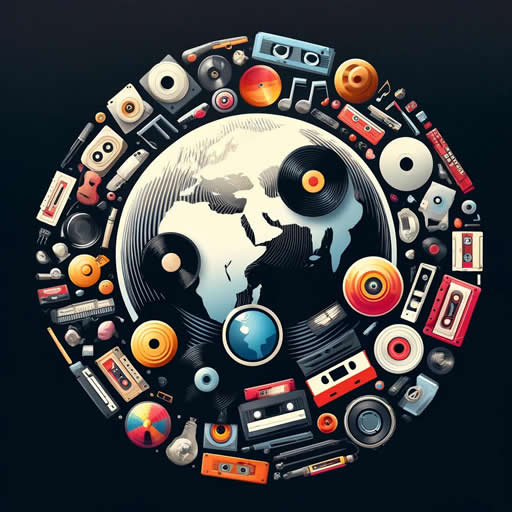The History of Vinyl Records: From Wax Cylinders to Second Hand LPs
Key Takeaways
– Vinyl records have a storied history, evolving from wax cylinders to beloved collectibles.
– The popularity of vinyl has experienced several waves, from its initial rise to a modern resurgence.
– Vinyl records remain a treasured form of music memorabilia for collectors around the world.
Introduction
Imagine flipping through a box of second hand LPs at your local record fair. The crackle of a needle as it lowers onto a vinyl record can transport you to another world. Vinyl records have a unique ability to evoke nostalgia, and their rich history is just as fascinating. From their humble beginnings in the late 19th century with wax cylinders to their latest revival, vinyl records have cemented their place in the music industry.
The Early Days of Vinyl
The journey of vinyl records began not with vinyl but with wax. Before the LPs we treasure today, there were wax cylinders, invented by Thomas Edison in 1877. These cylinders marked the dawn of recorded sound. Early listeners marveled at the possibility of capturing sound, but the format itself had practical limitations.
From Wax to Shellac
Transitioning from wax cylinders, the early 20th century saw the introduction of shellac records. Shellac records dominated the music scene until the mid-20th century. Though they offered better sound quality compared to their wax predecessors, they were fragile and cumbersome.
The Advent of Vinyl
The post-war era gave birth to the innovation that would change the course of recorded music: the introduction of vinyl records in the late 1940s. Unlike their shellac counterparts, these new vinyl records were lighter, more durable, and capable of holding more music. This technological leap culminated in the golden age of vinyl in the 1950s and 1960s, a period still celebrated by vinyl enthusiasts today.
Related
– Discover more about the evolution of vinyl and its impact during the golden age.
The Rise and Fall of Vinyl
By the 1970s, vinyl records were the primary medium for music. For a couple of decades, no serious music collection lacked an assortment of LPs. Record collecting became more than just a hobby; it was a cultural phenomenon. Album covers became canvases for artistic expression and provided a more immersive listening experience.
The Challenges of the Digital Era
However, with the rise of digital technology in the 1980s, the music industry saw a seismic shift. The convenience of CDs and, later, mp3s marginalized the use of vinyl. Many predicted the demise of the vinyl format. The tactile and warm sound of records got overshadowed by the flawless clarity of digital formats.
While vinyl never disappeared completely, it remained a niche interest for years. Those who held onto their collections or bought records at garage sales did so for sentimental reasons.
Related
– Understand the distinctions between vinyl records and other audio storage media.
The Revival of Vinyl
Every long player wears its unique history, so you might wonder: what prompted the vinyl revival? Somehow, this vintage medium clawed its way back into the mainstream. The resurgence of vinyl began in the early 2000s, driven by several factors.
Nostalgia and Collectibility
Vinyl records began reappearing in dedicated record shops and even popular retail stores. Nostalgia played a major role; people yearned for a tangible connection to music, much like collectors of other music memorabilia. Artists began releasing new albums on vinyl, acknowledging the superior sound quality and tactile experience that digital formats couldn’t replicate.
Vinyl’s revival was not just survival; it was a full-blown resurgence. Record sales soared, aided by younger generations discovering the magic of vinyl records.
Related
– Explore trends and predictions for vinyl’s continuing influence in the music industry.
A New Generation of Collectors
In today’s culture, vinyl records continue to thrive, attracting new collectors keen to embrace the past. Online marketplaces and second-hand shops bolster the second hand LP market. Collecting is more accessible than ever. These records signal more than just music; they symbolize an enduring piece of cultural and technological evolution.
As this trend marches on, questions linger. What does the future hold for vinyl records? Will they endure the growing digital landscape?
Related
– Gain insights into building a vinyl collection and maintaining your records.
Conclusion
From wax cylinders to vinyl dominance, to facing near extinction and rising again – the history of vinyl records is a tale of resilience. Each used record spins tales of the past while providing an analog refuge from our digital world.
Vinyl records reflect creativity and innovation, and their journey is far from over. As you dive through crates seeking your next musical treasure or enjoy an evening with a classic album, remember that this isn’t just a hobby. It’s a rich lineage stretching back through music history.
Editor’s Picks
– The Evolution of Jukebox Machines – Discover how jukeboxes have transformed alongside vinyl records.
– Top 10 Rare Vinyl Records and Their Stories – Explore the tales behind some of the world’s rarest vinyl.
– Why Country Music Vinyl is a Must-Have for Any Collection – Learn why country vinyl records are essential collectibles.
